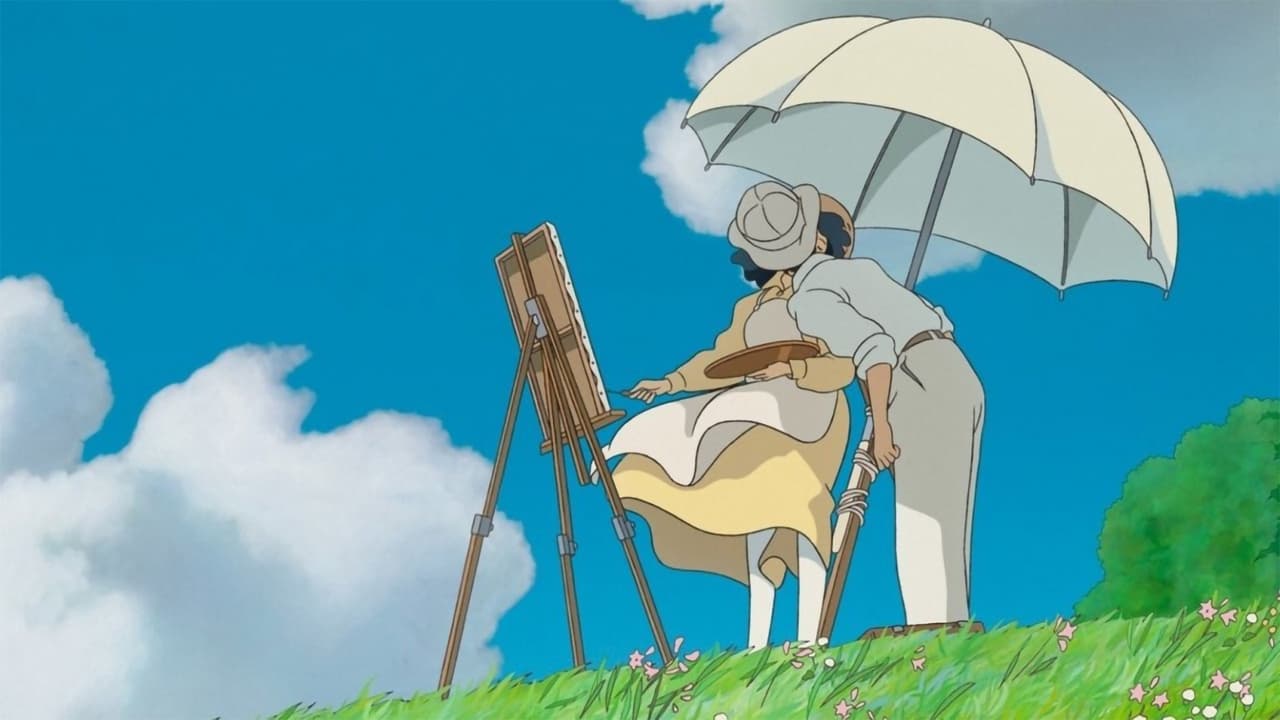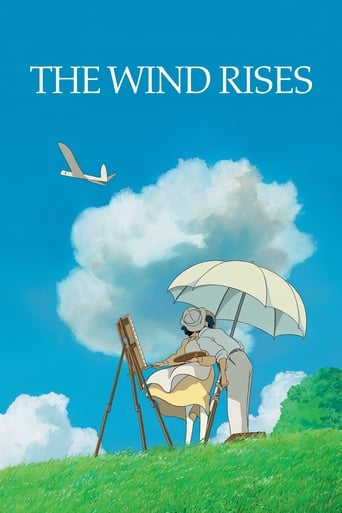

Better Late Then Never
... View MoreIt's a good bad... and worth a popcorn matinée. While it's easy to lament what could have been...
... View MoreYes, absolutely, there is fun to be had, as well as many, many things to go boom, all amid an atmospheric urban jungle.
... View MoreA clunky actioner with a handful of cool moments.
... View MoreHe's created so many influential masterpieces consistently, so the question is did he go out in style? No, but very very close. This is a fictionalised biopic on Jiro who was famed for designing one of the most accomplished airplanes ever that were used in the Second World War. This area of the biopic was fascinating, only a pioneer like Miyazaki could make a film about engineering innovative and compelling. The other area of the film was his romance with a young lady named Nahoko. Which, again, was tender and beautiful to watch as their relationship blossomed. The problem is, the two do not match at all and so the overall plot and story is somewhat unfocused. Consistently jumping back and forth between his career and love life, the two just didn't marinate together as a narrative. More importantly, like with any Studio Ghibli production, the animation is absolutely beautiful. Colourful, vibrant and with fluid motion, I was transported into Miyazaki's vision. I loved Jiro's dream sequences which gave Miyazaki a chance to show some fantasy elements that he is all too famous for. The character of Jiro himself was well developed. Summed up easily as a Good Samaritan, a helpful chap who was career minded and aspired to be great. I found him to be relatable and likeable. The film includes many of Japan's historic events such as The Great Kanto earthquake, Second World War and the epidemic of tuberculosis. These are dealt with gently and intelligently. It might look like the film is aimed for the younger audience, but if you look deeper it is a far more humanistic drama about aspiration and inspiration. Can definitely appeal to the more mature audience. Also liked the English dub, thought Joseph Gordon-Levitt was well cast as the voice of Jiro. Oh, and the musical score was tremendous, particularly the more heartfelt softer pieces of music. So whilst this might not be Miyazaki's best work, it still is a beautiful, compelling and engrossing animated feature.
... View MoreI knew this was a film from the Japanese animation geniuses at Studio Ghibli, I didn't know it was based on a real story, to be honest though I mainly wanted to watch it because of its inclusion at the Oscars, directed by Hayao Miyazaki (Princess Mononoke, Spirited Away). Basically it tells the true story of Jiro Horikoshi, the man who designed Japanese fighter planes during World War II. As a young boy, Jirô (Zach Callison) dreamed of flying and designing beautiful aeroplanes, he was inspired by the famous Italian aeronautical designer Giovanni Battista Caproni (Stanley Tucci), he has a dream about meeting him. Unfortunately Jiro's nearsightedness from a young age prevented him from becoming a pilot, but in his dream, Caproni told him he never actually flew a plane in his life, and that building them is better. When he grows up, Jirô Horikoshi (Joseph Gordon-Levitt) joins a major Japanese engineering company and becomes one of the world's most innovative and accomplished aeroplane designers, including the design for the Mitsubishi A6M Zero. The story sees him going through his own life, as well as experiencing historical events of the time, including the Great Kanto Earthquake, the Great Depression, the tuberculosis epidemic and Japan plunged into the Second World War. It also sees Jiro falling in love with Nahoko (Emily Blunt), who suffers tuberculosis and a lung haemorrhage, but eventually recovers and marries him, and it also sees his cherished friendship with his colleague Honjô (John Krasinski). Also starring Martin Short as Kurokawa, Mandy Patinkin as Hattori, Mae Whitman as Kayo Horikoshi, Jennifer Grey as Mrs. Kurokawa, William H. Macy as Satomi, Elijah Wood as Sone and Werner Herzog as Castorp. The stars doing the dubbed voices are all fine, there is no denying it is fantastic hand-drawn animation as usual, I'm not sure if going for a more realistic approach is right for the studio, we are more used to the fantasy stories with fantastical creatures, but it is just about interesting, an alright animated drama. It was nominated the Oscar for Best Animated Feature Film of the Year and it was nominated the Golden Globe for Best Foreign Language Film. Worth watching!
... View More...And the story is so excellent it could have been a live action film Studio Ghibli at it's best and animation at it's best. how did the Oscars pass up on this for the win!? Plus I'm showing favoritism as the movie is about one of my favorite subjects, Aviation.Somewhere in-between The Great War and World War II lies Jiro, a young Japanese man who becomes a fan of an Italian airplane designer and shares his dream (Literately in the sense of the movie) of designing air crafts, and the movie goes through his process, as well as him finding love.I don't know if this is a true story or how inspired by true events the movie is, but the Zero fighter that Jiro designs was used by the Japanese in World War 2. I do know the title comes form a poem. The Wind Rises, what a perfect title for a movie about Aviation.Anyway, The Wind Rises is like a painting in movement. the complete extension of what I want from animation. There was one scene in which Japan suffered an earthquake and with animation, they intensified the scene making it look like the ground just had a hiccup and caused all this chaos and destruction. it was brilliant.So I'm sorry, as good as Frozen is I think the Oscars made the wrong choice in not given the Wind Rises the trophy.
... View MoreThe Wind Rises is an anime film by Studio Ghibli and Hayao Miyazaki's final movie as a writer/director. I found it to be very touching and poignant, as to be expected from anything by Studio Ghibli and the animation was, as always, breathtaking. While it's not my favourite of Miyazaki's movies, it's certainly one of his most beautiful to look at.The film is a fictionalised biopic about Jiro Horikoshi, designer of the Mitsubishi A5M fighter aircraft used by the Japanese during World War II. Since he was a child, Jiro had dreamed of being a fighter pilot, but due to his poor eyesight he was unable to follow through on it. After reading a magazine on aviation, he becomes interested in designing aircraft when he dreams one night that he meets the famous Italian aircraft designer Giovanni Battista Caproni, who tells him that it is better to build planes rather than flying them. As a result, Jiro then vows to become an aircraft engineer.Like with every Studio Ghibli film, there's a certain hard-to-describe artistic beauty about this movie. A lot of time and effort has gone into telling this story and it definitely shows. It is a fitting retirement piece for the legendary anime director Hayao Miyazaki.I rate it 8/10 and would definitely recommend it to any fan of Studio Ghibli and fans of animation in general.
... View More